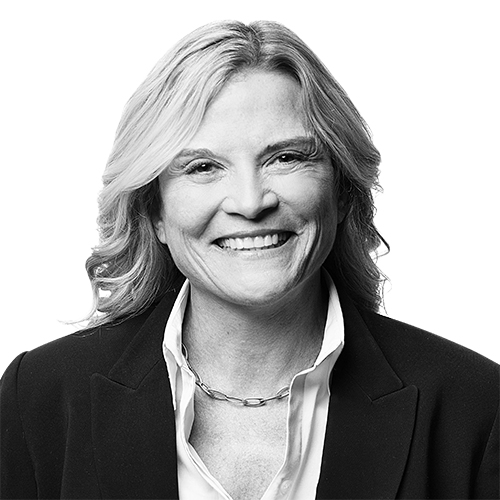A bowl of ice cream on a hot summer’s day—a simple pleasure from a simple product, right? If you work in the ice cream business, not so much.
For starters, it’s a dairy product that’s made in hyper-clean packing plants and formulated with precision to satisfy very specific tastes across a broad spectrum.
Ice cream is one of the few products that skips a warehousing phase, traveling directly from plants to grocers’ frozen display cases to maintain necessary conditions. It also comes in many forms that have nothing to do with taste: A sizeable segment of the market looks for lower fat and lower calorie varieties.
One person in the thick of this dynamic, complicated industry is Rosanna Neagle, vice president of legal affairs for Nestlé USA Dreyer’s Grand Ice Cream. While it might take effort to muster sympathy for anyone working for the leading American ice cream company (there are bunker freezers full of product samples in the company’s headquarters in Oakland, California) a closer examination of her responsibilities shows there’s a lot more to frozen confections than what meets the palate.
Start with the many, many flavors of ice cream. Dreyer’s offers its popular “slow churned” variety with half the fat and one-third fewer calories than its normal recipe as an option for the diet conscious. But the word “healthy” is not on this product due to definitions written by the US Food and Drug Administration (FDA). This is just one of many examples of issues that arise regarding label claims.
“I’m not a food regulatory lawyer,” explains Neagle, who sits on the Nestlé subsidiary company’s leadership team and therefore must keep track of regulatory affairs. When product managers and their marketing teams are trying to keep up with consumer demands, Neagle and the rest of the team must be certain that they take no undue legal risk to meet consumer demands.
“Often there is no definition from the FDA on certain kinds of claims,” she says, noting that multimillion-dollar class action suits targeting products in the good-for-you category have proliferated in the past decade. “We have to make judgment calls,” she explains.” Product definitions are decided by regulators on a case-by-case basis.
A trend that is significantly transforming much of the consumer packaged goods industry is to refer to ingredients using “words you can read,” such as milk and cocoa instead of diglycerides, carrageenan, and sodium bicarbonate; all harmless and routinely used terms throughout the food industry.
“We are going simple in 2016 with ingredients,” says Neagle, adding that when you make things on a billion dollar scale, changes like this require a lot of work over several years. “It’s very different from what small companies do with niche brands,” she adds.
Those niche competitors’s business practices can and do influence industry behemoths like Dreyer’s, and in-house attorneys are expected to respond.
Neagle relates how its sister brand Häagen-Dazs, which does not report to her, has launched six flavors in its “artisanal collection” line. Each flavor is inspired by a real confectionary artisan who is depicted on the product package. Great regulatory attention is given to the ingredients and FDA-mandated nutritional facts on the back of the pint container, and a separate set of lawyers considers the marketing claims on the face.
“Often there is no definition from the FDA on certain kinds of claims. We have to make judgment calls.”
Neagle oversees a division of counselors who are business segment specialists. They guide marketers and food technologists in new product development.
“We have to understand the role of each product,” she says. “Some of the legal issues are very dense topics that the business people need to understand. We have to provide actionable advice that is understandable.”
The entire food industry operates in a constant state of vigilance over the threat of microbiological pathogens causing a public health emergency.
The ice cream segment is not immune to this. A listeria outbreak via a competitor brand in 2015 sickened people in four states, with three reported deaths in Kansas.
“It is a 24/7 business,” says Neagle, who would be on the front lines should anything go awry at any of the company’s five manufacturing plants.
That kind of stress—far removed from the simple imagery of ice cream on a summer veranda—might drive many employees to trips to those office ice cream bunkers. But not Neagle—not in the eight years she’s been with the company.
“I’m all about portion control,” she says. “One teaspoon, not three scoops.”

